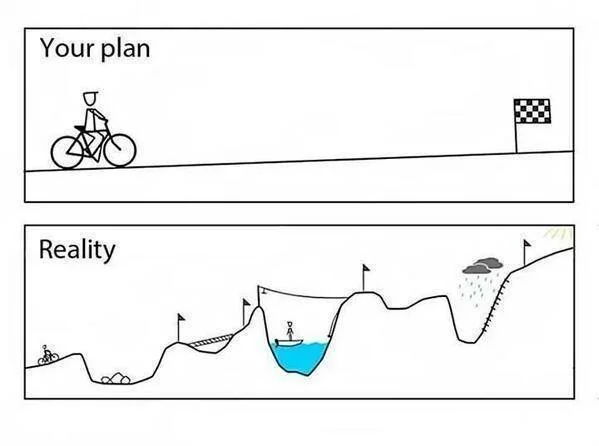Resources
What Healing Looks Like

What does healing look like? When an injury occurs or pain rears its head, often the most prominent thought is…how can I make it stop? Or, more accurately, how fast can I make this stop? The search for a solution – the quickest and most cost-effective one possible – can lead down paths of frustration, unmet expectations, and desperation.
Managing Expectations
Most of the expectations we have around pain, recovering from injury, and building strength come from industry standards. We want results fast because that is what we have been conditioned to expect. Insurance typically covers 20 visits to a physical therapist per year, equaling 2-3 months of care for one issue that may or may not respond that quickly. Some insurance covers chiropractic care, acupuncture, and massage but limits how often those modalities can be utilized. Most personal trainers will create 4-6 week plans for clients, not necessarily because results happen that quickly but rather because they know that anything longer will lose people’s interest. There is high pressure to get results quickly or risk losing clients to someone else who promises faster results with claims like:
2 week mobility plan! This stretch fixed my back pain forever!! Get a 6-pack in 6 weeks! Banish shoulder pain forever!!
The cost of being subject to constant ads and targeted marketing is a healthy view of what change looks like and how long healing takes.
When it comes to recovering from injury and healing from pain, here’s what most people experience:

It can be daunting to realize that healing may not be linear and (almost definitely) will not be fast. In light of this, it’s important to make some shifts in what healing looks like. Yes, ideally it looks like a reduction in pain.
Progress towards healing can also look like this:
Awareness
The first step towards healing will often be awareness. Noticing where and when pain occur, and where it doesn’t, is a normal part of healing. One action that might be helpful is a simple daily diary. This can be kept on your phone or on paper and is just a place to jot down how your particular issue is feeling that day and what, if anything, was done differently. Over a period of time, you will begin to see some patterns and gain information that is helpful to both you and your providers.
Flexibility
Acknowledging that there are dips and curves along the way. At times, it feels like regression has happened, at others, the progress seems stagnant. Maybe the pain subsided and then increased. Maybe it’s all over the map. If you’ve started a new movement or treatment regimen, keep in mind that you may be sore. It is normal to feel soreness the day after a massage and tired after a chiropractic adjustment . Feeling mentally drained after a hard weights or mobility session is also normal. These are not signs of regression. Wait 2-3 days. If the soreness subsides, and you go back to baseline or better than baseline, you’ll know both what “soreness” feels like and how to recognize it in the future. Regression, on the other hand, looks like a sudden worsening in your condition or new, acute symptoms that do not improve after 2-3 days.
Curiosity
Learning new approaches. When you just want to get out of pain, it can be difficult to stay curious. Pain is linked to memory, as is recovery. If a particular movement is painful, the brain tends to go straight into protective mode any time you come close to re-creating that scenario. It may react and create tension or even give you feelings of fear. Learning new, better ways to move, think and react will create new pathways for your brain to travel on. This doesn’t have to be an instant overhaul of everything you do, it could be just a few small daily actions added to your schedule.
Patience
Finding peace with a longer trajectory and fewer actionable steps. Once you get past the need to throw “everything but the kitchen sink” at your problem, you can hone in on being consistent with a few approaches. This might include seeing your providers on a more consistent basis for 3-4 months before deciding if it is working. Or, integrating just a few targeted stretches or movements daily for several months, rather than just a few days. Extending your expected time frame allows you to learn about your body and create an actionable plan. It also makes it easier to integrate new approaches into every day life. Increasing strength or regaining mobility is a slow filling of a bucket…one drop at a time. One movement at a time. A few hours spread over the course of a month is far more effective and sustainable than two hours at once.
It’s no secret that creating change and healing takes time, probably more time than we’d all like to admit. Recovering from injury or addressing pain (in any form) is a skill. Once learned, these skills can empower you in the future. You’ll know what to do and have a better grid for what to expect.
If you’re seeking integrated care in the Willamette Valley where you won’t feel rushed, visit us at Well Balanced Center for Integrated Care in Eugene, OR.
Here is a link to an interesting article regarding pain and memory.
Are you waking up in pain? Check out this article on our blog regarding the best sleep positions.
Disclaimer alert: The views expressed within this article are opinions and are not meant to replace, contradict, or be substitution for the advice or guidance of licensed medical or mental health professionals.